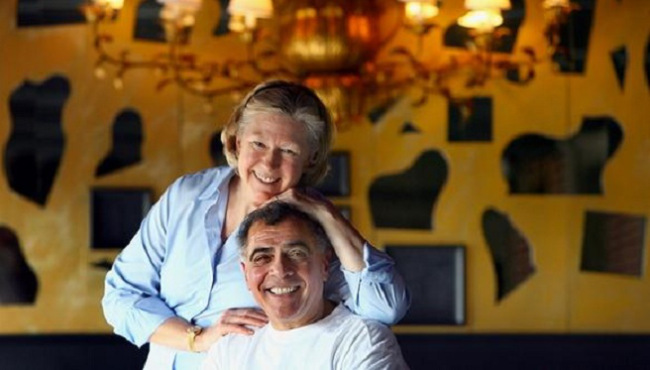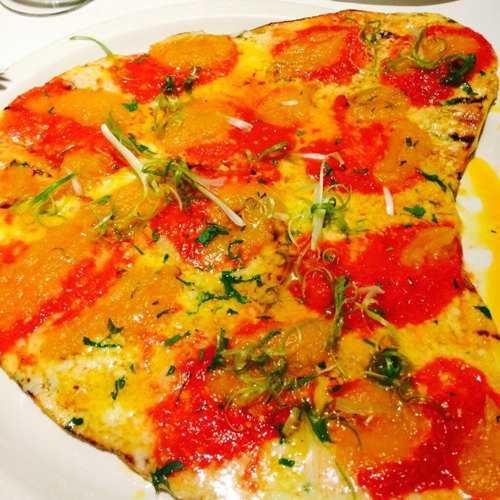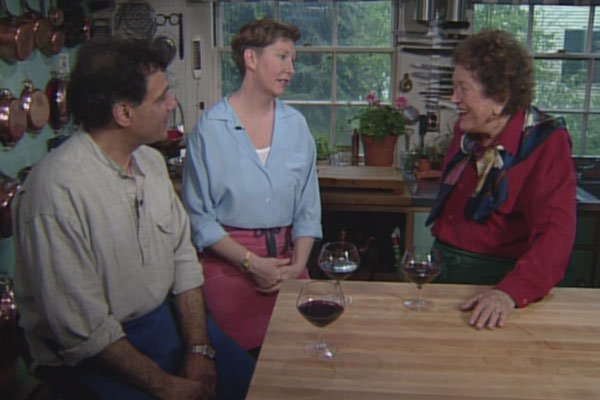“Providence has a great history, and the deeper you get into it, the more you love it.” –George Germon
Back in 2008, I was lucky enough to work near the future location of Tini’s, which was the much-buzzed about sequel of sorts to Al Forno, the restaurant that (almost single-handedly) put Providence on the culinary map.
Two united aesthetics, a single shared vision — and one great adventure.
I would walk by every single day and marvel at George Germon, who owned the restaurant with his wife, Johanne Killeen, as he slowly but surely transformed the former New Yorker Diner (a classic greasy spoon) into the spare and elegant Tini’s, with its signature u-shaped bar. (If only I’d had an iPhone, in order to time-lapse the results.)
After a while, he spotted me watching him hard at work, and invited me in to take a look. You could tell how much pride he took in tending to every last detail himself — he clearly took aesthetics, process and finesse as seriously as he did food. (You can take the chef out of RISD, but you can’t take RISD out of the chef.)
Germon and Killeen started Al Forno in 1980, when Providence was hardly a foodie destination, never mind a Travel + Leisure Top 10 City.
The early years of Al Forno were a struggle, but the couple’s strong, steadfast vision — and their beautiful execution of it — eventually bore fruit.
Al Forno is widely credited with inventing the whisper-thin grilled pizza, and the restaurant also brought Providence its first national, then international, press attention. It became a destination, and so too did Providence (eventually).
George and Johanne met in the swelteringly hot kitchen of Joe’s Upstairs, the influential but short-lived restaurant started by Dewey Dufresne in 1975. (If that last name sounds familiar, well, Dewey’s son Wylie is widely regarded as one of the finest chefs in the world. He, too, cut his teeth as a line cook at Al Forno.)
George was initially hired by Dewey to finish and correct shoddy work done by a string of bad contractors. He tore out walls, reframed doors, installed epoxy flooring (rare at the time) and built the restaurant’s signature u-shaped booths.
When Tini’s was still under construction, I’d walk by every day and see George in there, tearing out walls and working hard to make the place perfect.
But once the restaurant was completed, he traded his carpenter’s apron for a chef’s jacket, whipping up dishes like Chicken Amandine, Shrimp George (a best-seller) and a luxurious seafood chowder with a sherry- and lobster base.
It was at Joe’s that the couple learned the value of the freshest, highest-quality ingredients. George told me, “There was never anything in the larder, because Dewey would come in with ingredients at 4:45pm and want [everything] on the menu at 5pm that night.”
By the time they were ready to open Al Forno, the lessons they learned from Dewey — aesthetic, practical, cautionary — would serve them in good stead.
When I think of George and Johanne, I think of two people whose skill sets were perfectly complementary — she the baker and photographer; he the chef, builder, and craftsman.
Two united aesthetics, a single shared vision — and one great adventure.
You’ll be missed, George.



